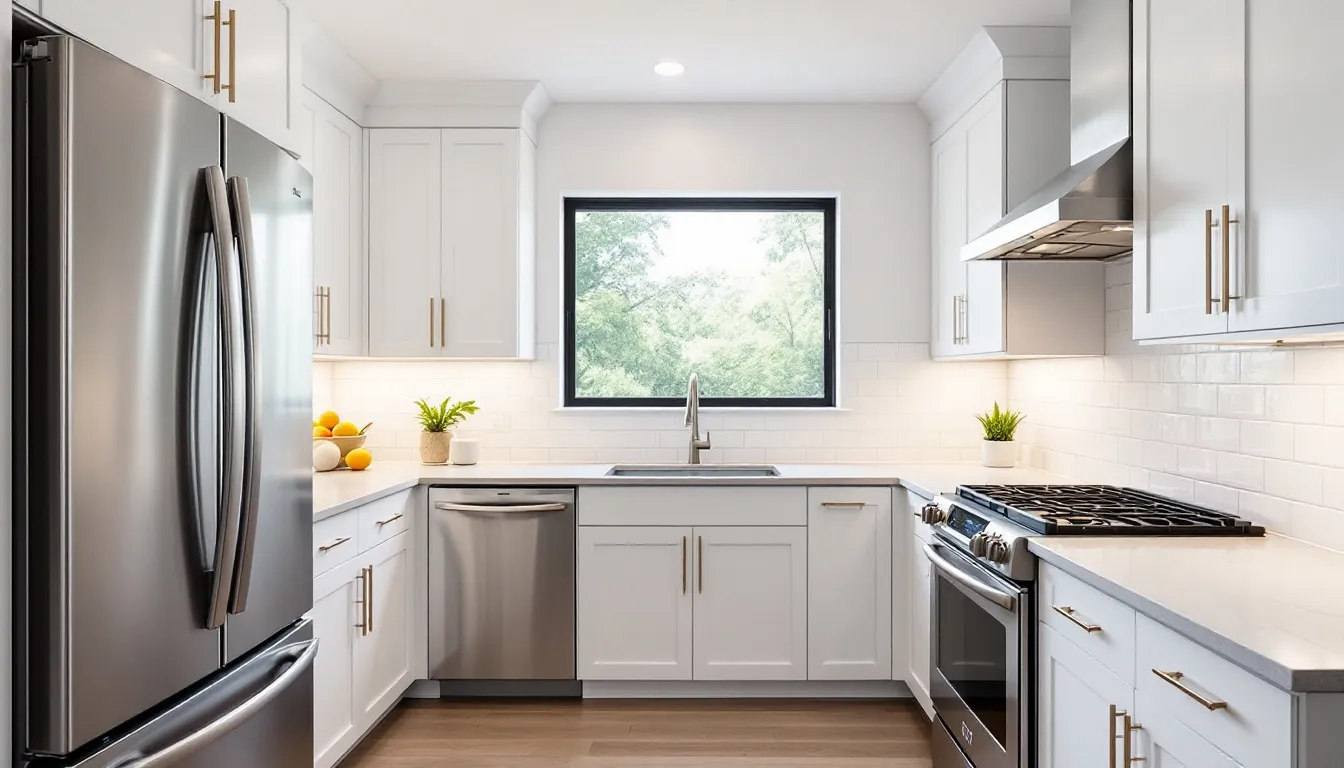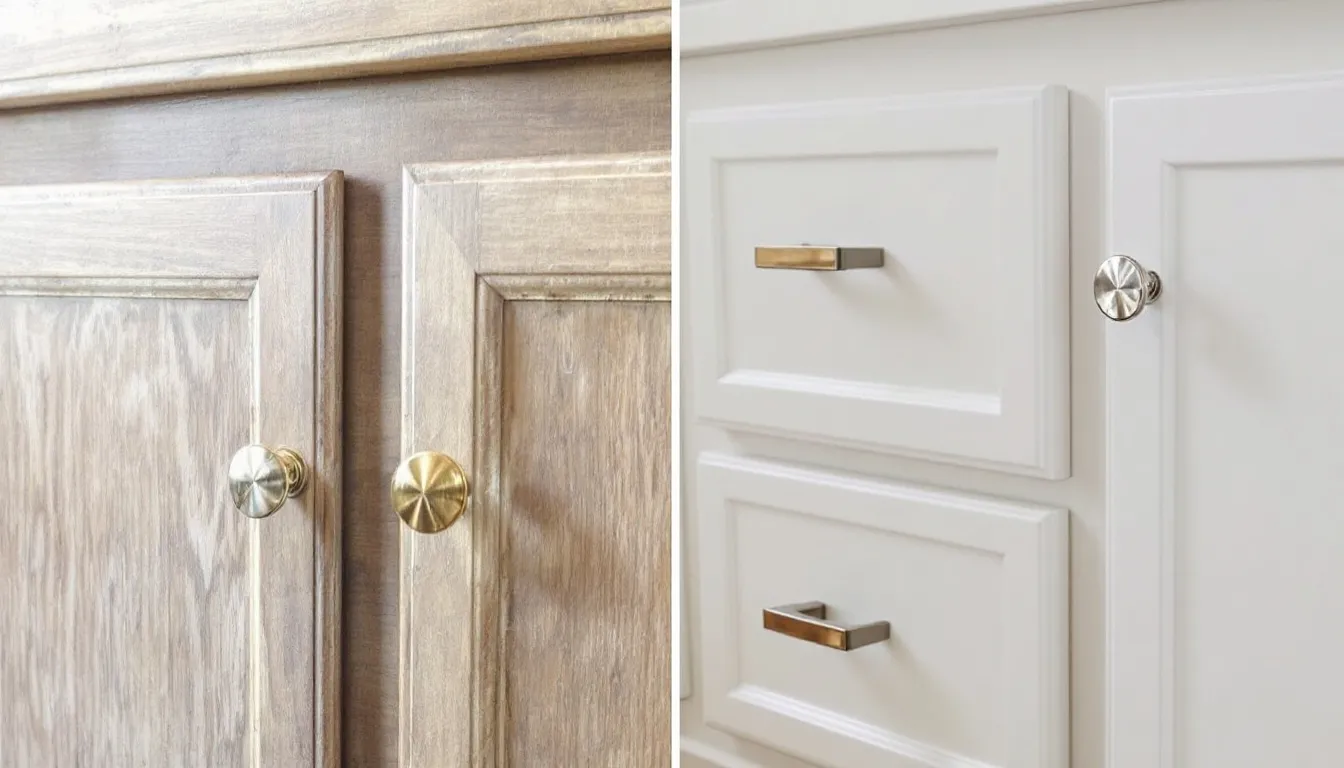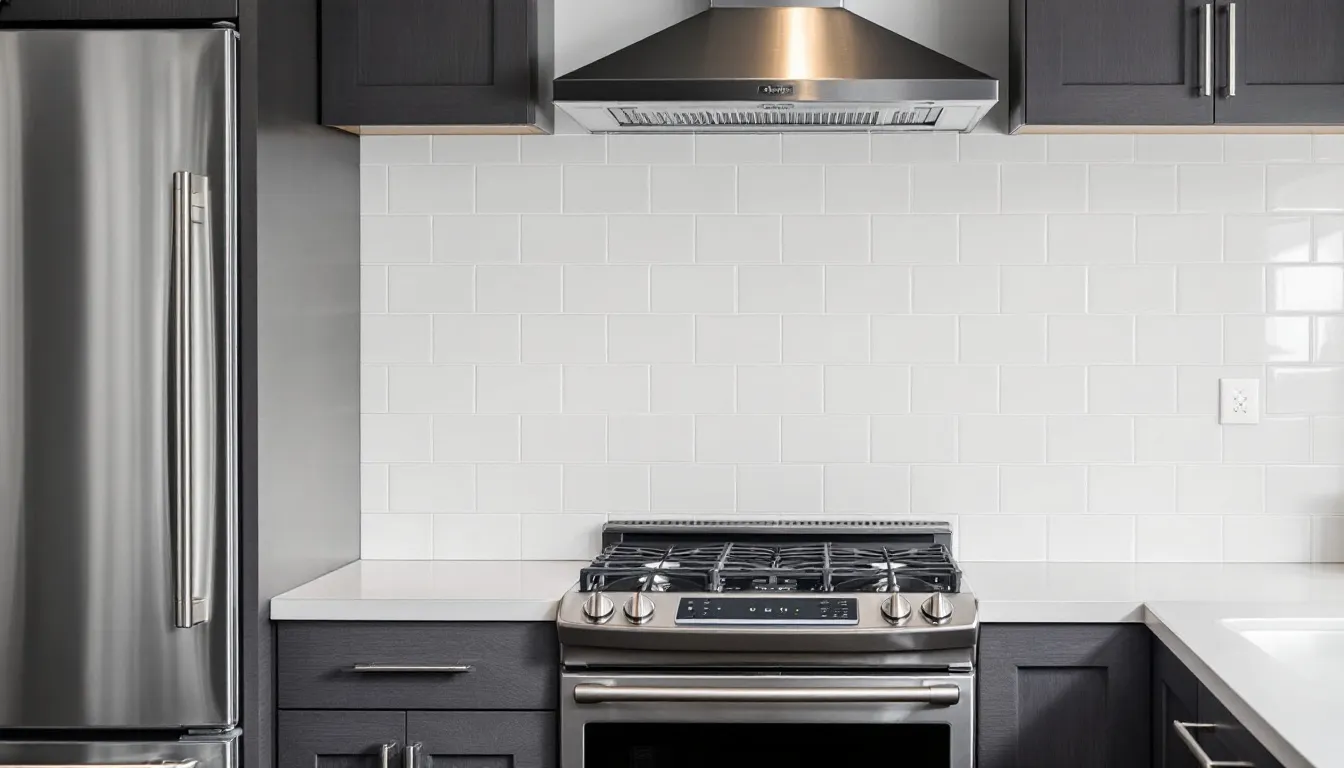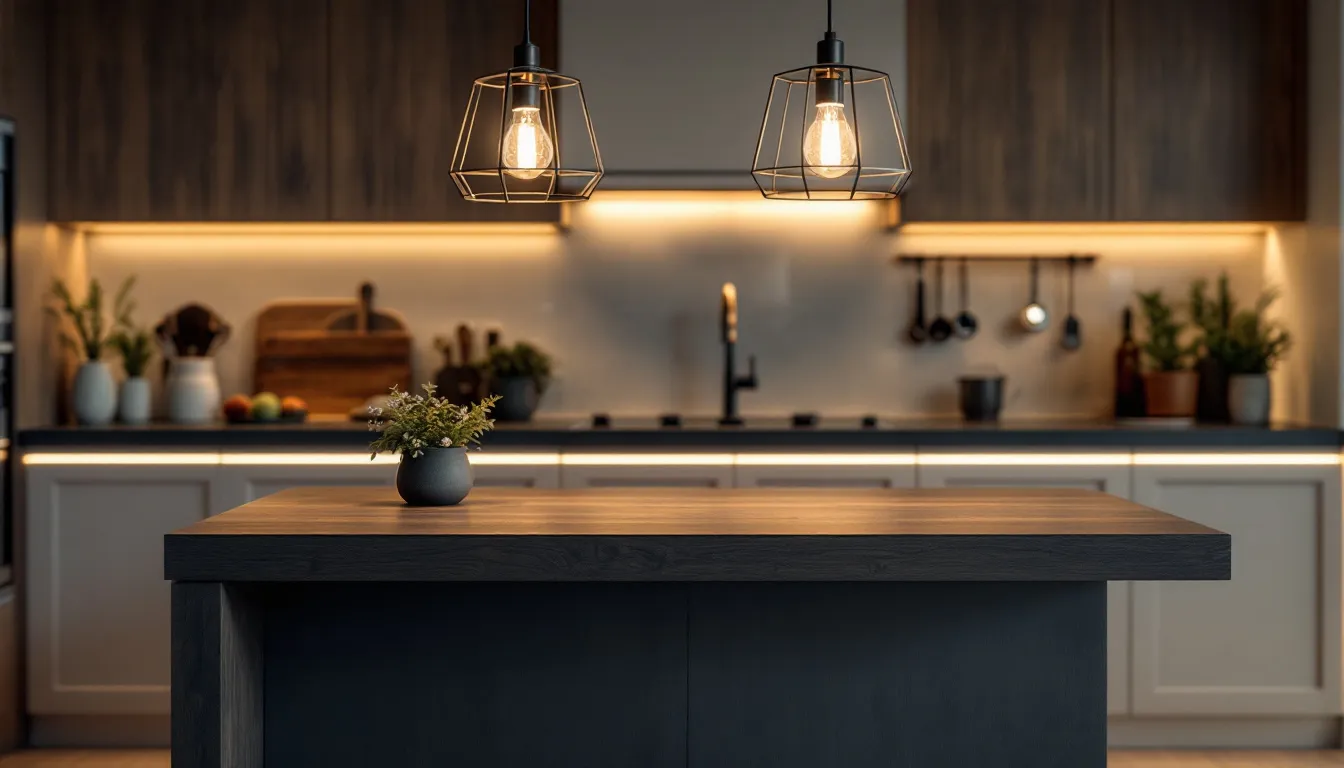When many homeowners think about kitchen renovations, they picture tens of thousands of dollars disappearing into a beautiful kitchen that may never fully recoup its investment. But smart homeowners know there’s a better approach. Instead of pursuing an entire kitchen overhaul, strategic kitchen upgrades can deliver impressive returns while transforming your space into something prospective buyers will love.
The secret lies in understanding which improvements offer the best roi and appeal to the broadest range of future buyers. Recent data shows that minor kitchen remodel projects consistently outperform major renovations, with some upgrades recouping 85-96% of their cost compared to just 38% for luxury remodels.

Why These Kitchen Upgrades Deliver Maximum ROI
Kitchen remodels can recoup 70-85% of investment costs according to 2024 Remodeling Magazine data, but the key is choosing upgrades that create significant impact without requiring massive capital investment. Minor kitchen upgrades often outperform major renovations because they focus on high-visibility improvements that don’t involve structural changes or permit requirements.
West Coast markets are seeing 104% ROI on strategic kitchen improvements in 2024, while even conservative markets consistently deliver 70-80% returns on well-chosen upgrades. The most successful projects focus on upgrades that appeal to 80% of potential buyers rather than personal preferences, ensuring maximum resale value when it’s time to sell.
Real estate agents consistently report that updated kitchens serve as a huge selling point, often determining whether home buyers will even schedule a second showing. An outdated kitchen can single-handedly derail a sale, while strategic improvements create the kind of move-in-ready appeal that generates multiple offers.
1. Cabinet Refacing and Hardware Updates
Nothing transforms a kitchen’s appearance more dramatically than updated cabinets, but replacing cabinets entirely can cost $15,000-$30,000 for an average-sized room. Cabinet refacing offers a budget friendly way to achieve similar visual impact for just $4,000-$9,000, making it one of the smartest places to invest your money.
The refacing process involves replacing cabinet doors and drawer fronts while keeping existing cabinet boxes intact. New Shaker-style doors and drawer fronts in white or gray consistently appeal to the widest range of buyers, creating that fresh, contemporary look that makes any space feel updated and user friendly.
Hardware selection can make or break the final result. Brushed gold, matte black, or stainless steel hardware priced at $3-$12 per piece offers substantial visual impact for minimal investment. Drawer pulls in particular create clean lines that complement modern design trends, while soft close hinges and drawer slides add $200-$500 but significantly increase perceived value and daily functionality.
This upgrade alone can recoup 75-90% of costs and completely transform your kitchen’s appearance. The key is choosing timeless styles over trendy options that might look dated within a few years. Many homeowners report that cabinet refacing creates more space visually by eliminating heavy, dated styling that can make upper cabinets feel overwhelming.
Professional installation ensures proper alignment and finish quality, but skilled DIYers can tackle drawer fronts and hardware as weekend projects. The combination of visual transformation and practical improvement makes this upgrade particularly attractive to both current residents and potential buyers.

2. Quartz or Granite Countertop Installation
Updated countertops serve as the kitchen’s focal point and significantly influence buyer perception of the entire space. Quartz countertops average $50-$70 per square foot installed in 2024, while granite options range from $40-$60 per square foot for standard colors, making both materials accessible for most renovation budgets.
White and light gray speckled patterns like Calacatta or Kashmir White remain the most popular choices because they complement virtually any cabinet color and create that bright, clean aesthetic buyers expect in modern kitchens. These neutral options also photograph beautifully, which matters increasingly in today’s social media-driven real estate market.
Countertop upgrades typically recoup 85-95% of investment at resale, particularly when paired with undermount sinks for that seamless, high-end appearance. The combination eliminates the dated tile or laminate surfaces that immediately signal an outdated kitchen to prospective buyers, while providing the low maintenance surfaces that busy families actually want to live with.
Stone countertops also add substantial perceived value because they suggest quality throughout the house. Real estate agents report that granite countertops often become talking points during showings, helping potential buyers envision themselves entertaining and cooking in the space.
Installation typically takes 2-3 days including templating, fabrication, and final installation. Professional installation is essential for proper support and sealing, but the investment pays dividends in both daily use and eventual resale. The durability of stone surfaces means this upgrade continues adding value for decades, making it one of the most cost-effective long-term home improvements.
3. Subway Tile Backsplash Installation
A subway tile backsplash bridges the gap between trendy and timeless, offering visual interest without the risk of looking dated in five years. Classic 3×6 inch white subway tile costs just $3-$8 per square foot, while installation typically adds $10-$15 per square foot for labor, making this one of the most budget friendly ways to add significant visual impact.
The average kitchen backsplash project costs $600-$1,200 and recoups 70-80% of its value, but the improvement in daily functionality and visual appeal often exceeds the financial return. Herringbone or vertical patterns add visual interest without extra material costs, creating custom looks that suggest higher-end design work.
Glass subway tiles in soft gray or blue-green are trending for 2024-2025, offering subtle color that complements both warm and cool kitchen palettes. These options create depth and reflect light beautifully, making kitchens feel brighter and more spacious—qualities that consistently appeal to home buyers.
Professional installation ensures proper waterproofing and alignment, but this ranks among the more DIY-friendly kitchen upgrades for homeowners with basic tile experience. The key is choosing grout colors that enhance rather than compete with the tile, typically staying within one shade of the tile color for cohesive results.

The backsplash also provides practical benefits by protecting walls from cooking splashes and making cleanup easier. This combination of form and function explains why updated backsplashes consistently rank among the best kitchen upgrades for both daily living and resale value.
4. Fresh Paint in Neutral Colors
Professional painting costs $1,500-$3,000 for an average kitchen, but fresh paint can recoup 100-150% of investment when done professionally, making it potentially the highest-return upgrade on this list. Benjamin Moore White Dove and Sherwin Williams Agreeable Gray top the choice lists for 2024, offering versatile neutrals that complement any style and create that move-in-ready feel buyers seek.
Light colors make spaces appear 15-20% larger according to design studies, which matters enormously in smaller kitchens where every square foot counts. Fresh paint also signals to potential buyers that the home has been well-maintained, reducing concerns about hidden maintenance issues that could derail a sale.
DIY projects can be completed for $200-$400 in paint and supplies, though professional results typically justify the additional investment. Professional painters understand surface preparation, proper primer selection, and application techniques that ensure durability in high-moisture kitchen environments.
The psychological impact of fresh paint shouldn’t be underestimated. Clean, bright walls create that “new” feeling that helps both residents and potential buyers envision possibilities rather than focusing on existing limitations. This mental shift can be worth thousands in negotiating power when it’s time to sell.
Color selection remains crucial for maximum appeal. While bright colors might reflect personal style, neutral palettes appeal to the broadest range of buyers and provide flexibility for future decorating choices. The goal is creating a canvas that allows people to imagine their own belongings in the space.
5. LED Under-Cabinet and Pendant Lighting
LED strip lighting costs $50-$150 per linear foot installed, while pendant lights over kitchen islands range from $100-$400 each for quality fixtures. These investments deliver 60-75% of costs in resale value plus ongoing energy savings of $50-$100 annually, creating both immediate and long-term financial benefits.
Under cabinet lighting transforms kitchen functionality by eliminating shadows on work surfaces, making food preparation safer and more enjoyable. The warm white temperatures (2700K-3000K) most appealing to buyers create inviting ambiance that suggests comfort and sophistication—qualities that translate directly into buyer interest.
Pendant lights serve dual purposes as task lighting and design elements, drawing attention to kitchen islands while providing focused lighting for meal preparation and casual dining. The right fixtures can make even modest kitchens feel more expensive and well-designed, contributing to that overall impression of quality that influences buyer decisions.
Energy efficiency represents a growing priority for home buyers concerned about utility costs and environmental impact. LED conversions demonstrate forward-thinking home maintenance while delivering measurable monthly savings that continue long after the initial investment.

Smart features like dimmer controls and automated scheduling add convenience without significant additional cost, appealing to tech-savvy buyers while maintaining broad market appeal. The combination of energy efficiency, improved functionality, and enhanced aesthetics makes lighting upgrades among the most practical investments homeowners can make.
Calculate Your Potential Returns
Spending no more than 10-15% of home value on kitchen upgrades ensures optimal ROI regardless of market conditions. A $500,000 home should limit kitchen improvements to $50,000-$75,000 maximum, focusing investments on the high-impact upgrades that deliver measurable returns rather than pursuing luxury features with diminishing value.
Tracking local market trends through recent comparable sales in your neighborhood provides crucial context for investment decisions. Markets vary significantly, and understanding local buyer preferences helps prioritize which upgrades will deliver the most value in your specific area.
Consulting with local real estate agents about which upgrades buyers prioritize most offers invaluable insight into current market conditions. These professionals see daily how different improvements influence buyer behavior and can guide decisions toward investments that will actually pay dividends when it’s time to sell.
The combination of these five upgrades—cabinet refacing, updated countertops, subway tile backsplash, fresh paint, and LED lighting—typically costs $15,000-$25,000 while adding $12,000-$22,000 in home value. More importantly, these improvements create the cohesive, updated appearance that attracts quality buyers and generates competitive offers.
Upgrades to Avoid for ROI
High-end appliances beyond $8,000-$12,000 rarely recoup full investment because they appeal to a limited buyer pool while adding minimal functionality for most families. Stainless steel appliances provide the visual appeal buyers expect, but luxury brands often represent personal preferences rather than universal improvements.
Custom cabinetry and luxury finishes like exotic stone or specialty hardware appeal to limited buyer pools while significantly increasing project costs. The goal should be creating beautiful kitchen spaces that feel expensive without actually requiring luxury-level investments.
Trendy colors or patterns that may look dated in 3-5 years represent particularly poor ROI because they require replacement sooner than neutral alternatives. Kitchen renovations should withstand at least 10-15 years of style evolution while maintaining broad market appeal.
Structural changes requiring permits add $5,000-$15,000 in costs while introducing timeline uncertainty and potential complications. Focus on improvements that work within existing layouts rather than pursuing major reconfigurations that may not deliver proportional value increases.
The most successful kitchen upgrades focus on mass-appeal improvements rather than personal preferences. While customization creates enjoyment for current residents, broad market appeal ensures maximum returns when selling becomes necessary. By choosing upgrades that practically pay for themselves, homeowners can enjoy beautiful kitchen spaces while protecting their investment for the future.
Smart storage solutions like lazy susans and built in organizers add functionality without major expense, while hardwood floors extending into kitchen areas create seamless flow that suggests larger, more expensive homes. The key is understanding which investments deliver the most value for the money, creating beautiful kitchen spaces that serve both current needs and future resale potential.
